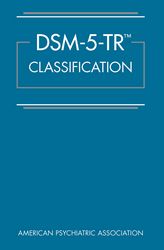
Without Criterion A (brief instructions and items only), which is appropriate when trauma exposure is measured by some other method.The PCL-5 can be administered in one of three formats: It takes approximately 5-10 minutes to complete. The PCL-5 is a self-report measure that can be completed by patients in a waiting room prior to a session or by participants as part of a research study. The change in the rating scale, combined with the increase from 17 to 20 items means that PCL-5 scores are not compatible with PCL for DSM-IV scores and cannot be used interchangeably.Rating scale descriptors are the same: "Not at all," "A little bit," Moderately," "Quite a bit," and "Extremely." The self-report rating scale is 0-4 for each symptom, reflecting a change from 1-5 in the DSM-IV version.The wording of PCL-5 items reflects both changes to existing symptoms and the addition of new symptoms in DSM-5. The PCL-5 is a 20-item questionnaire, corresponding to the DSM-5 symptom criteria for PTSD.Although there is only one version of the PCL-5 items, there are 3 formats of the PCL-5 measure, including one without a Criterion A component, one with a Criterion A component, and one with the Life Events Checklist for DSM-5 (LEC-5) and extended Criterion A component.There are no corresponding PCL-M or PCL-C versions of PCL-5. PCL-5 is most similar to the PCL-S (specific) version. PCL for DSM-IV has 3 versions, PCL-M (military), PCL-C (civilian), and PCL-S (specific), which vary slightly in the instructions and wording of the phrase referring to the index event.Several important revisions were made to the PCL in updating it for DSM-5: When necessary, the PCL-5 can be scored to provide a provisional PTSD diagnosis. The gold standard for diagnosing PTSD is a structured clinical interview such as the Clinician-Administered PTSD Scale (CAPS-5). Monitoring symptom change during and after treatment.The PCL-5 has a variety of purposes, including: The PCL-5 is a 20-item self-report measure that assesses the 20 DSM-5 symptoms of PTSD.
Cite dsm 5 software#
VA Software Documentation Library (VDL).Clinical Trainees (Academic Affiliations).War Related Illness & Injury Study Center.Publisher: American Psychiatric Association Publishing “Favorites” for bookmarking important entries.



The DSM-5 Differential Diagnosis Handbook can play a critical role in this process by improving the diagnostic process of psychiatric conditions. Beginning with the patient’s presenting symptoms, they ultimately narrow down multiple options to one condition. Preview or Buy using this app.įREE PREVIEW – View select topics to experience the 6-step diagnostic framework and interactive decision trees to discover how this app can help all health care professionals narrow down an accurate psychiatric diagnosis.ĪBOUT DSM-5™ DIFFERENTIAL DIAGNOSIS HANDBOOKĪll clinicians are trained to make accurate diagnoses.


 0 kommentar(er)
0 kommentar(er)
